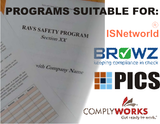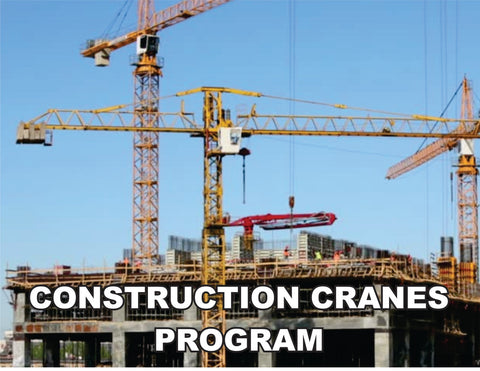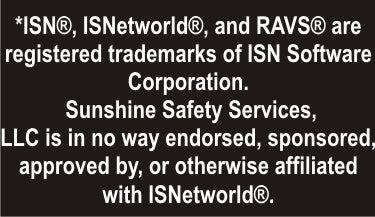Construction Cranes Program - ISNetworld RAVS Section - US
$ 34.95
Construction Cranes Program - ISNetworld RAVS Section - US

This Construction Cranes Program (ISNetworld® RAVS®* Section), in addition to being a complete and functioning written safety program (chapter), it also contains all the required text elements that are sought by the ISNetworld RAVS® (Review And Verification Service) reviewer. This plan has been previously submitted and has achieved a 100% approval rating for our clients.
- All programs are guaranteed now and in the future to achieve 100% approval.
- There are NO maintenance or subscription fees.
- Simply notify us if any program falls out of compliance and we will correct it at NO CHARGE.
You are downloading a MicroSoft® Word document file to your computer that is completely editable:
- Construction Cranes Program:
- Approximate Word Count: 6,580
- Approximate Number of Pages: 19
- Page Reference Answers to RAVS Reviewer’s Questions: 12
You will also receive instructions for a simple two-step process to place your company name and safety person's name throughout this word document to conform it to your company. Please review, and feel free to alter or add to it as you wish with any specific company information or safety policies that you may already have.
The first two pages of the document are guidelines for conforming this safety manual section, an index for completing the RAVS® questionnaire (with all page references), and uploading the section.
If you experience any difficulty filling out the questionnaire, or have any questions in general about these documents, call 314-570-0072, or e-mail me at vsunshine1@gmail.com.
An excerpt from ISNetworld® RAVS®* Safety plan Construction Cranes Program
INTRODUCTION
This section covers all cranes and derricks used in construction with several exceptions. The exceptions include tow trucks used to lift vehicles and clear wrecks, dedicated drilling rigs, tree trimming and removal work, gin poles for erecting communications towers, helicopter cranes, articulating “knuckle-boom” trucks (when used to transfer materials from a crane truck to the ground) and cranes used in railroad operations (which are covered by the Federal Railway Administration).
GROUND CONDITIONS
Replace with Company Name must ensure that the ground conditions are safe to support crane use, inform the equipment users and operators of the location of any ground hazards (e.g., voids, tanks, utilities) and talk with the operator or assembly director about what must be done to assure safe ground conditions. Equipment must not be assembled or used unless ground conditions are firm, drained, and graded to a sufficient extent so that, in conjunction (if necessary) with the use of supporting materials, the equipment manufacturer’s specifications for adequate support and degree of level of the equipment are met. [1]
ASSEMBLY/DISASSEMBLY
Manufacturers’ procedures and prohibitions for assembly and disassembly must be complied with, [2] unless Replace with Company Name can show that its procedures are safer (with the exception of the use of synthetic slings where the manufacturers’ procedures must be used). Assembly/ disassembly must be directed by a competent and qualified person also known as the A/D (assembly/ disassembly) director. [3] The RSO, Replace with safety person’s name will designate the A/D director. The A/D director must review the procedures before starting work and make sure that the crew members understand the tasks, the hazards and positions/locations to avoid.
Crew members must inform the operator before they go out of his/her view into an area where they could be hurt by movement of the equipment or load, and the operator cannot move the equipment or load until the crew members communicate that it is safe to do so. Employees are not allowed under the boom or jib when pins are being removed unless Replace with Company Name demonstrates it is necessary and implements special procedures. Hazards that must be addressed include:
• ground conditions;
• blocking material and location;
• loads on assist cranes;
• rigging attachment points;
• supports for components when pins are removed;
• center of gravity identification;
• minimizing snagging of ropes on the boom or pins;
• supports for counterweights;
• testing of the boom brake;
• backward stability of the components; and
• wind speed/weather.





